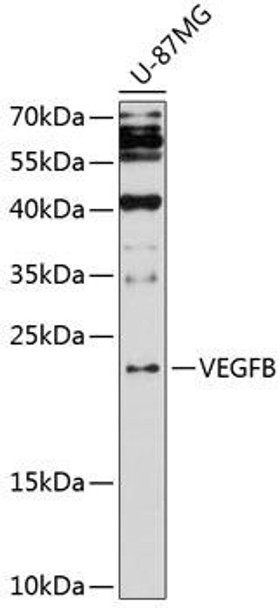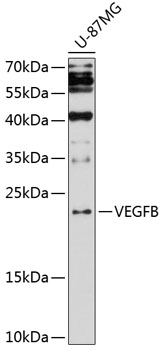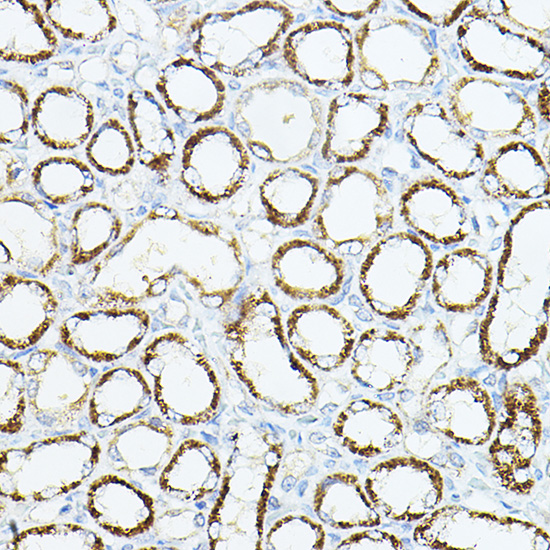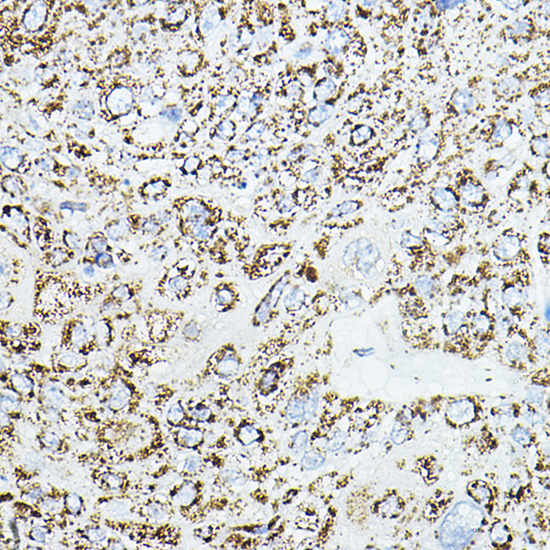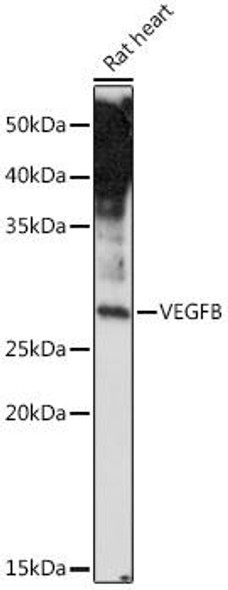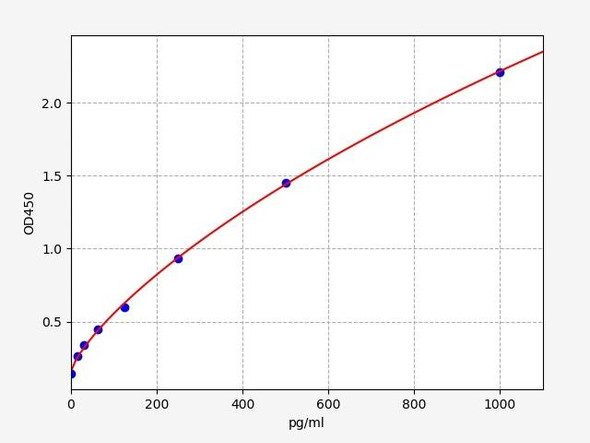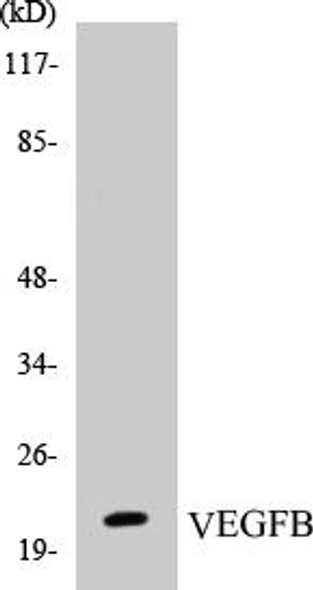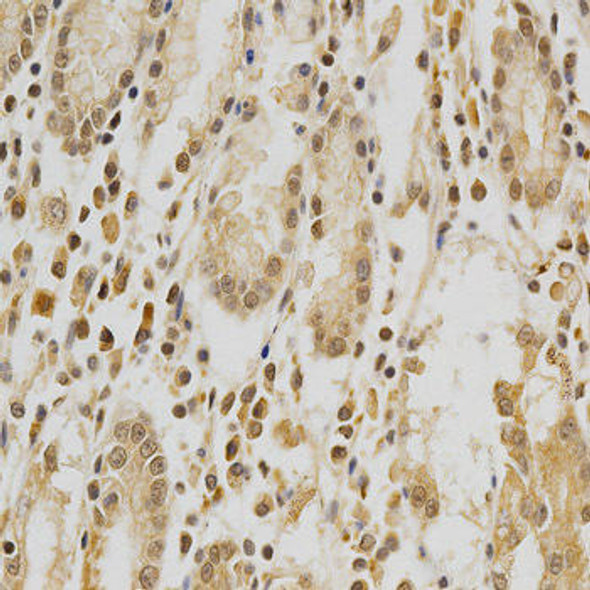Description
Anti-VEGFB Antibody (CAB12689)
The VEGFB Polyclonal Antibody (CAB12689) is a valuable tool for researchers studying Vascular Endothelial Growth Factor B (VEGFB), a protein involved in angiogenesis and vascular permeability. This antibody, generated in rabbits, is highly specific for detecting VEGFB in human samples and is validated for use in Western blot applications. By binding to the VEGFB protein, this antibody enables the visualization and analysis of VEGFB expression in various cell types, making it useful for investigations in vascular biology and cancer research.VEGFB is a member of the VEGF family known for its role in promoting blood vessel growth and enhancing vascular function.
Its involvement in angiogenesis and vascular permeability makes it a key target for research into diseases such as cancer, cardiovascular disorders, and diabetic retinopathy. Understanding the function and regulation of VEGFB is essential for developing therapies that target angiogenesis and vascular abnormalities in these pathological conditions. Overall, the VEGFB Polyclonal Antibody (CAB12689) provides researchers with a reliable tool for investigating the role of VEGFB in various physiological and pathological processes, ultimately contributing to the development of novel treatment strategies for angiogenesis-related diseases.
| Antibody Name: | Anti-VEGFB Antibody |
| Antibody SKU: | CAB12689 |
| Antibody Size: | 20uL, 50uL, 100uL |
| Application: | WB IHC IF |
| Reactivity: | Human, Mouse, Rat |
| Host Species: | Rabbit |
| Immunogen: | Recombinant fusion protein containing a sequence corresponding to amino acids 25-207 of human VEGFB (NP_003368.1). |
| Application: | WB IHC IF |
| Recommended Dilution: | WB 1:1000 - 1:2000 IHC 1:50 - 1:200 IF 1:50 - 1:200 |
| Reactivity: | Human, Mouse, Rat |
| Positive Samples: | U-87MG |
| Immunogen: | Recombinant fusion protein containing a sequence corresponding to amino acids 25-207 of human VEGFB (NP_003368.1). |
| Purification Method: | Affinity purification |
| Storage Buffer: | Store at -20'C. Avoid freeze / thaw cycles. Buffer: PBS with 0.02% sodium azide, 50% glycerol, pH7.3. |
| Isotype: | IgG |
| Sequence: | QPDA PGHQ RKVV SWID VYTR ATCQ PREV VVPL TVEL MGTV AKQL VPSC VTVQ RCGG CCPD DGLE CVPT GQHQ VRMQ ILMI RYPS SQLG EMSL EEHS QCEC RPKK KDSA VKPD RAAT PHHR PQPR SVPG WDSA PGAP SPAD ITHP TPAP GPSA HAAP STTS ALTP GPAA AAAD AAAS SVAK GGA |
| Gene ID: | 7423 |
| Uniprot: | P49765 |
| Cellular Location: | Secreted |
| Calculated MW: | 21kDa |
| Observed MW: | 21kDa |
| Synonyms: | VEGFB, VEGFL, VRF, VEGF-B |
| Background: | This gene encodes a member of the PDGF (platelet-derived growth factor)/VEGF (vascular endothelial growth factor) family. The VEGF family members regulate the formation of blood vessels and are involved in endothelial cell physiology. This member is a ligand for VEGFR-1 (vascular endothelial growth factor receptor 1) and NRP-1 (neuropilin-1). Studies in mice showed that this gene was co-expressed with nuclear-encoded mitochondrial genes and the encoded protein specifically controlled endothelial uptake of fatty acids. Alternatively spliced transcript variants encoding distinct isoforms have been identified. |
| UniProt Protein Function: | VEGFB: Growth factor for endothelial cells. VEGF-B167 binds heparin and neuropilin-1 whereas the binding to neuropilin-1 of VEGF-B186 is regulated by proteolysis. Homodimer; disulfide-linked. Can also form heterodimer with VEGF. Expressed in all tissues except liver. Highest levels found in heart, skeletal muscle and pancreas. Belongs to the PDGF/VEGF growth factor family. 2 isoforms of the human protein are produced by alternative splicing. |
| UniProt Protein Details: | Protein type:Secreted, signal peptide; Secreted; Cell cycle regulation; Motility/polarity/chemotaxis; Cytokine Chromosomal Location of Human Ortholog: 11q13 Cellular Component: extracellular region Molecular Function:protein binding Biological Process: platelet degranulation; vascular endothelial growth factor receptor signaling pathway |
| NCBI Summary: | This gene encodes a member of the PDGF (platelet-derived growth factor)/VEGF (vascular endothelial growth factor) family. The VEGF family members regulate the formation of blood vessels and are involved in endothelial cell physiology. This member is a ligand for VEGFR-1 (vascular endothelial growth factor receptor 1) and NRP-1 (neuropilin-1). Studies in mice showed that this gene was co-expressed with nuclear-encoded mitochondrial genes and the encoded protein specifically controlled endothelial uptake of fatty acids. Alternatively spliced transcript variants encoding distinct isoforms have been identified. [provided by RefSeq, Sep 2011] |
| UniProt Code: | P49765 |
| NCBI GenInfo Identifier: | 17380554 |
| NCBI Gene ID: | 7423 |
| NCBI Accession: | P49765.2 |
| UniProt Secondary Accession: | P49765,Q16528, |
| UniProt Related Accession: | P49765 |
| Molecular Weight: | 21,261 Da |
| NCBI Full Name: | Vascular endothelial growth factor B |
| NCBI Synonym Full Names: | vascular endothelial growth factor B |
| NCBI Official Symbol: | VEGFB |
| NCBI Official Synonym Symbols: | VRF; VEGFL |
| NCBI Protein Information: | vascular endothelial growth factor B |
| UniProt Protein Name: | Vascular endothelial growth factor B |
| UniProt Synonym Protein Names: | VEGF-related factor; VRF |
| Protein Family: | Vascular endothelial growth factor |
| UniProt Gene Name: | VEGFB |
| UniProt Entry Name: | VEGFB_HUMAN |


